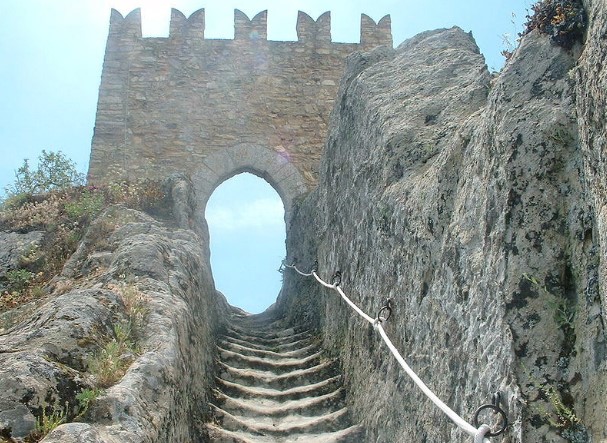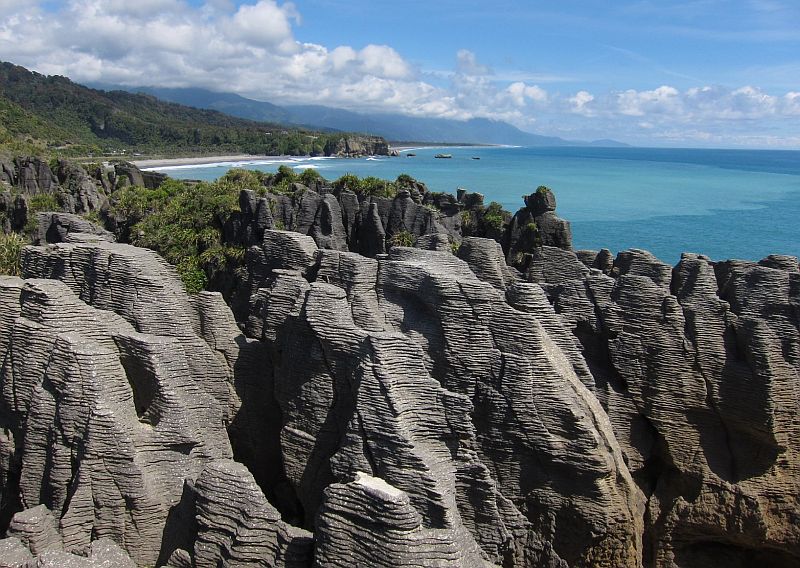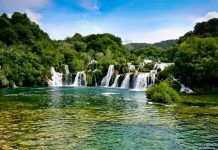Located in the province of Enna, Sperlinga Castle is a medieval fortress built on the top of a rock overlooking the town. An ancient sandstone monolith is carved into the castle, which stands above caves containing sacred temples. The sandstone rock features a particular construction to see.
In ancient Sicilian culture, cemeteries were dug into the rock to make graves. The Greek word Speladon (meaning cave) was Latinized as Spelunca or cave of the castle. The name Spelunca comes from the Latin “spelunca”, which means a deep, dark, natural cave. This fortress stands on a rocky crag in the Nebrodi Mountains. One of the coolest castles in Sicily doesn’t get as much press as the others. Therefore, many travelers consider it so unique and in great shape.
From the 12th century on, Sperlinga became the center of a large community of Lombards who arrived in Sicily from Northern Italy. The Lombards speak a dialect known as Gallo-Italic today. During the Norman period, it was built in the 11th and 12th centuries. The village and its castle were first documented in 1080. In The War of the Sicilian Vespers, Michele Amari identified documents that corroborated the thesis that Angevin soldiers in Sperlinga led by “Petro de Alemanno or Lemanno” resisted the attack of the Aragonese army in 1283.
In the War of the Vespers, Petro de Lemanno himself waited in vain for Angevin’s aid. It is a place of magic and mysticism that can be felt in the structure entirely carved into the rock, where Charles I of Anjou found refuge there. It is like entering another world, where nothing is decorated, and everything has a purpose. The various rooms of the castle, where numerous secular legends have been passed down, were carved out of this hard rock.
Castle Ventimiglia was assigned to the Ventimiglia family in 1324 by the Aragonese after the conflict. Messina, Palermo, Mount Altesina, and Enna were connected by royal dirt roads. Baron Giovanni Forti, or Gianforte Natoli purchased Sperlinga Castle in 1597. On August 29, 1597, Giovanni Forti Natoli bought it from the prince of Castelbuono Giovanni Ventimiglia, for 30,834 feuds. By establishing the barony as a principality in 1626, Philip IV granted him and his descendants the title of prince and the right to build there. A commercial center grew up around the castle, which involved the whole surrounding area. Natoli’s son Francesco Natoli took over the property.
From there, it was purchased in 1658 by the Oneto family, dukes of San Silvestro, and awarded in 1666 by King Charles II of Spain, dukes of Sperlinga. The Natoli family retained the title of princes of Sperlinga after the castle was sold. The Duke of Sperlinga, Giovanni Stefano Oneto, erected Villa Sperlinga in Palermo. After Domenico Oneto’s death in 1680, his son Francesco Oneto and Spatafora inherited it.
Sperlinga Castle passed to the family of Baron Nunzio Nicosia in 1862, who sold it in 1973. A drawing of the Sperlinga castle grotto was made by artist Maurits Cornelis Escher in 1932. Today, the castle’s ancient walls, a two-light mullioned window considered a national monument, the Prince’s reception hall, the chapel, and a steep stone staircase lead to the lookout tower. This offers a 360-degree view of Gangi, with the Madonie Mountains in the rear and the Nebrodi Mountains in the north.
Sperlinga Castle is a very interesting place and the views are stunning from the ramparts, but you do have to climb some much-worn stairs. Today, inside the castle, there are excavations designed for astronomical functions, including the management of the sun’s penetration during the winter and summer solstices, and a silo with 12 niches for astronomical functions. A large portion of the town is in ruin, as are many of the houses built into the hillside.
Read More: Breathtaking Odle Dolomites Mountain Range in Italy










